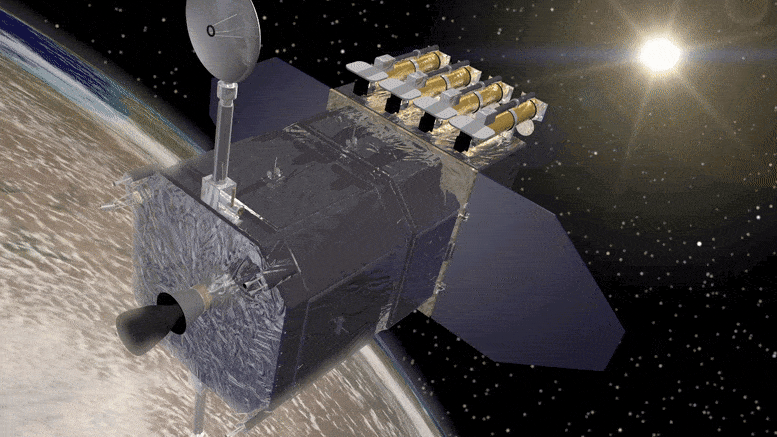
NASA’s Solar Dynamics Observatory captured these images of the solar flares — as seen in the bright flashes in the left image (May 8 flare) and the right image (May 7 flare). The image shows a subset of extreme ultraviolet light that highlights the extremely hot material in flares and which is colorized in orange. Credit: NASA/SDO
The Sun emitted two intense solar flares, with the first peaking at 9:41 p.m. ET on May 7, 2024, and the second peaking at 1:09 a.m. ET on May 8, 2024. NASA’s Solar Dynamics Observatory, which watches the Sun constantly, captured images of these events.
Solar flares are intense bursts of energy that can disrupt radio communications, electric power grids, and navigation signals. They also pose risks to spacecraft and astronauts. Both of the recent flares were categorized as X1.0, indicating their significant intensity. The ‘X-class’ label is used for the most intense flares, and the accompanying number describes their strength in more detail.

This animation of the Solar Dynamics Observatory shows it above the earth as it faces toward the Sun. SDO is designed to help us understand the Sun’s influence on Earth and Near-Earth space by studying the solar atmosphere on small scales of space and time and in many wavelengths simultaneously. Credit: NASA/Goddard Space Flight Center Conceptual Image Lab
NASA’s Solar Dynamics Observatory (SDO) is a mission dedicated to observing the Sun and its behavior. Launched on February 11, 2010, SDO is a part of NASA’s Living With a Star (LWS) program, which aims to understand the causes of solar variability and its impacts on Earth. The observatory is equipped with a suite of instruments that provide comprehensive measurements of the solar atmosphere and solar activity.
SDO’s main goals include understanding the solar cycle, solar flares, and coronal mass ejections, as well as their effects on space weather and Earth’s environment. The observatory provides high-resolution images of the Sun in 13 different wavelengths every 12 seconds, offering unprecedented insights into solar processes. Its data are crucial for improving the ability to forecast space weather events that can affect satellite operations, power grids, and communication systems on Earth.
https://news.google.com/rss/articles/CBMiU2h0dHBzOi8vc2NpdGVjaGRhaWx5LmNvbS9zb2xhci1mdXJ5LXVubGVhc2hlZC10d2luLXgtY2xhc3MtZmxhcmVzLWxpZ2h0LXVwLXRoZS1za3kv0gEA?oc=5
2024-05-09 07:04:05Z
CBMiU2h0dHBzOi8vc2NpdGVjaGRhaWx5LmNvbS9zb2xhci1mdXJ5LXVubGVhc2hlZC10d2luLXgtY2xhc3MtZmxhcmVzLWxpZ2h0LXVwLXRoZS1za3kv0gEA
Tidak ada komentar:
Posting Komentar